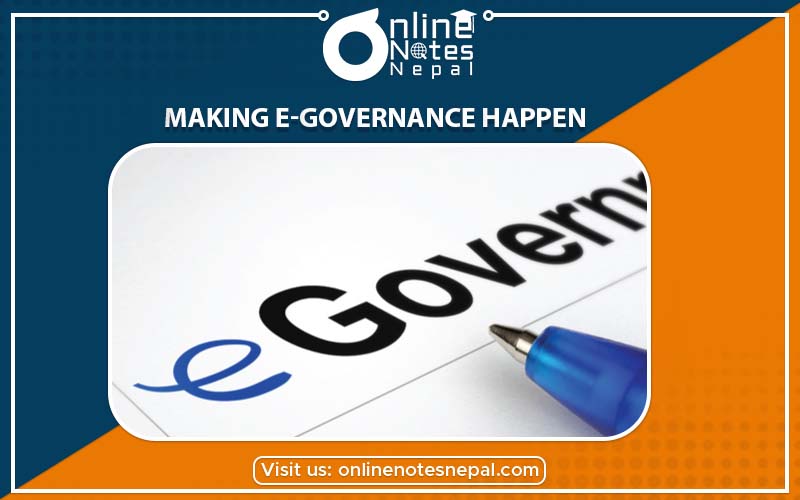Published by: BhumiRaj Timalsina
Published date: 14 Jan 2022

A vision of e-government should reflect the larger development goals of the country, the broader concerns and goals of society.The different five steps to make e-government happen are listed below.
An e-readiness assessment: It is important to take a government-wide inventory of assets. After determining what it has, a government must determine the quality of what it has, as well as what it does not have. Then it must write out a shopping list of what it needs to make e-government happen.
Online Services provided through E-governance: The Internal Efficiency and Effectiveness Portfolio's focus is to apply industry best practices to government. Different devices provided through the e-government as explain below.
E-Training:E-Training supports the development of the federal workforce and advances the accomplishment of agencies through simplified and one-stop access to e-Training products and services.
Recruitment One-Stop: Recruitment One-Stop provides state of the art online recruitment services to federal job seekers that include online job posting, intuitive job searching, resume warehouse, online application submission, automated eligibility and status feedback, applicant data mining and integration with sophisticated automated assessment tools.
Enterprise HR Integration: The enhance Human Resources Integration (EHRI) initiative is developing policies and tools to streamline and automate the electronic exchange of standardized HR data needed for creation of an official employee record across the Executive Branch.
E-Clearance: The E-Clearance initiative streamlines and improves the quality of the current security clearance process through the deployment of automation and common systems and policies to manage the security clearance.
E-Payroll: The E-Payroll initiative will standardize and consolidate Government wide Federal civilian payroll services and processes by simplifying and standardizing HR/payroll policies and procedures and better integrating payroll, human resources and finance functions.
E-Travel: The E-Travel program provides a government-wide web-based services that applies world-class travel management practices to consolidate federal travel minimize cost and produce superior customer satisfaction. From travel planning and authorization to reimbursement, end-to-end services will leverage administrative, financial and information technology best practices to realize significant cost savings and improved employee productivity.
Integrated Acquisition Environment: The Integrated Acquisition Environment (IAE) initiative creates a secure business environment that facilitates and supports cost effective acquisition of goods and services by federal agencies, while eliminating inefficiencies in the current acquisition environment.
E-Records Management: The E-Records Management initiative provides policy guidance to help agencies better manage their electronic records, so that records information can be effectively used to support timely and effective decision making, enhance service delivery, and ensure accountability.
E-Authentication: The E- Authentication initiative will provide a trusted and secure standards based authentication architecture to support Federal E-Government applications and initiatives.